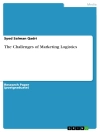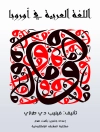This book examines the use of image and text juxtapositions in conceptual art as a strategy for challenging several ideological and institutional demands placed on art. While conceptual art is generally identified by its use of language, this book makes clear exactly how language was used. In particular, it asks: How has the presence of language in a visual art context changed the ways art is talked about, theorised and produced? Image and Text in Conceptual Art demonstrates how artworks communicate in context and evaluates their critical potential. It discusses international case studies and draws resources from art history and theory, philosophy, discourse analysis, literary criticism and social semiotics. Engaging the critical and social dimensions of art, it proposes three methods of analysis that consider the work’s performative gesture, its logico-semantic relations and the rhetorical operations in the discursive creation of meaning. This book offers a comprehensive method of analysis that can be applied beyond conceptual art.
قائمة المحتويات
Acknowledgements.- Introduction.- 1. Parallels between Art and Language.- 2. The Performative Gesture of Image and Text Juxtapositions.- 3. The Logico-semantics of Image and Text.- 4. Rhetorical Operations and the Discursive Creation of Meaning.- Conclusions.- Bibliography.
عن المؤلف
Eve Kalyva’s research concerns post-sixties and contemporary art, multimodality and the relation between art and politics. She has taught at universities in the United Kingdom and Argentina, and collaborated with international art institutions as curator and artist in residence. Her publications cover art history and criticism, philosophy, social semiotics, image and text studies, Latin American studies, museum studies and visual culture.












